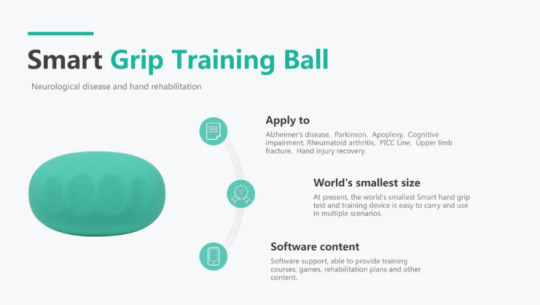#Ronald Petersen
Text
Get Your Board and Card Games at The Game Getaway in Folsom, CA
Owner Ronald Petersen owns Game Getaway where he features some nostalgic games such as Monopoly, Chess and Scrabble, just in time for the holidays. He also has some new and unique games like Tokaido and Catan available for purchase.
By Aaris A. SchroederEditor-In-ChiefWelcome to The Game Getaway, located in the heart of Old Folsom, CA where you can pick up some of your favorite games!Owner Ronald Petersen owns Game Getaway where he features some nostalgic games such as Monopoly, Chess and Scrabble, just in time for the holidays. He also has some new and unique games like Tokaido and Catan available for purchase.Monday…

View On WordPress
#aaris a. schroeder#Board Games#Christmas Gifts#holidays#modern strategy#party games#Ronald Petersen#The Fat Rabbit#The Game Getaway#ubo mag#ubo magazine#ubomag
0 notes
Note
best era of fashion in your opinion (can mean anything. designers, style movements, specific decades, etc)
oooh good question but also very hard! i think there's something to love about every decade (also something to hate lol) so i could never name a definitive best but the other day i was thinking about a really specific period and vibe in the late 90s around 97/98 where a lot of things were really haunting and eerie in shades of dark green and black and people were like on the floor a lot or just generally grim looking and incapable of standing up. it was like a cunty 90s take on victorian women slowly being poisoned by the arsenic in their wallpaper except more like supermodels on location succumbing to something evil growing in the hvac system of their haunted hotel. toxic mould if it slayed. it made luxury look evil and sad and i really like shoes and dresses being advertised in what feel like cautionary tales. like this ghost doesn't know she's dead but once a week she remembers when she finds her own body floating in the hotel pool but this is where she got her shoes btw
(long post)









amber valletta and joaquin phoenix by glen luchford for prada f/w 97





courtney love by steven meisel for vogue italia 1997

kylie minogue by stephane sednaoui, 1997

vinca petersen by corinne day, 1997

amy wesson by ronald stoops, 1997



youtube
angelina jolie by samuel bayer on the set of anybody seen my baby by the rolling stones, 1997 and the video itself



comme des garcons s/s 1997 photographed by paolo roversi

kate moss for cerruti by paolo roversi, 1998

nadja auermann in vogue paris, 1998

francesca sorrenti for l'officiel paris, 1998

kostas murkudis s/s 1998

mathilde pederson by mario sorrenti for harper's bazaar, 1997
#i know this is super specific and like a brief period but i've just been obsessed w it lately#thanku for asking! <3#p
13 notes
·
View notes
Text
Hateration holleration miscellanea:
EL CUERPO (2012): Intriguing but slightly disappointing Spanish thriller with a killer premise: mild-mannered chemistry professor Álex Ulloa (Hugo Silva) uses a rare drug to murder his wife Mayka (Belén Rueda) so he can run away with his younger mistress Carla (Aura Garrido), but Mayka's body then mysteriously disappears from the morgue, while a guard is hospitalized. A savvy police inspector (José Coronado) finds the drug in Álex's possession and is prepared to charge him with murder, but is Mayka really dead, or is it an elaborate plot to set him up? Effectively creepy — there are points in the first hour where you start to wonder if this might be some kind of EC Comics undead-spouse revenge horror plot — but while the ultimate resolution is unexpected, it hinges on certain events that appear very tangential to the plot, which deprives it of the needed emotional punch. CONTAINS LESBIAN? Alas. VERDICT: Clever, but ultimately too much of an intellectual exercise, lacking the nerve-jangling tension the premise deserved.
TO LIVE AND DIE IN L.A. (1985): Engrossing but frustratingly muddled crime drama, directed and cowritten by William Friedkin, based on a novel by Gerald Petievich about the unraveling of once-heroic Secret Service agent Richard Chance (William Petersen), who goes over the edge in his determination to nab slick counterfeiter/artist Eric Masters (Willem Dafoe), who killed Chance's former partner (Michael Greene). Effectively mean, with style to burn, a moody New Wave soundtrack by Wang Chung (I'm very partial to the theme song), a memorable villain, some good supporting performances (in particular Dean Stockwell as Masters' sleazy lawyer), and one of the few cinematic car chase sequences that's actually exciting. However, it never quite comes together, hampered by a pointless and Islamophobic opening sequence about Chance saving Ronald Reagan from a Muslim suicide bomber; ineffectual characterization of Chance's nebbishy current partner (John Pankow), who is caught in the undertow of Chance's moral disintegration; and an awkward late-third-act POV shift that leaves the whole story feeling like an unsatisfying misfire. CONTAINS LESBIANS? Masters' girlfriend (Debra Feuer) eventually skips town with her girlfriend (Jane Leeves), the only ones in the story who get anything like a happy ending. VERDICT: More narratively ambitious but less successful than Michael Mann's generically similar MANHUNTER (which also stars Petersen) a year later.
#movies#hateration holleration#el cuerpo#the body#oriol paulo#belen rueda#aura garrido#hugo silva#to live and die in l.a.#william friedkin#gerald petievich#william petersen#dean stockwell#willem dafoe#wang chung#debra feuer
0 notes
Text
Experimental Alzheimer’s drug shows benefits in phase 3 trial, company says
New Post has been published on https://medianwire.com/experimental-alzheimers-drug-shows-benefits-in-phase-3-trial-company-says/
Experimental Alzheimer’s drug shows benefits in phase 3 trial, company says

The Japanese drugmaker Eisai said Tuesday its experimental drug for Alzheimer’s disease helped slow cognitive decline in patients in the early stages of the illness.
The company said that in a phase 3 clinical trial, the drug, called lecanemab, slowed cognitive decline by 27% after 18 months. The results were announced in a news release and have not yet been peer-reviewed.
The results may offer renewed hope to Alzheimer’s patients after the U.S. drugmaker Biogen’s botched rollout of its drug, Aduhelm, last year. Biogen partnered with Eisai in the commercialization of the new drug, although Eisai led its development and the phase 3 trial.
Outside experts urged caution in interpreting the results, however.
The results are “a first step in the direction of making a significant impact on the disease,” said Dr. Ronald Petersen, a neurologist at the Mayo Clinic in Rochester, Minnesota.
Dr. Alberto Espay, a neurologist at the University of Cincinnati College of Medicine, said that the benefit was “small” and that it fell below the threshold of what would be meaningful to a patient. Still, he said, “patients can view this with cautious optimism.”
The results were based on 1,795 patients, who were randomly assigned to receive either the drug or a placebo every two weeks over 18 months. Cognitive decline was measured using a clinical dementia rating scale that focused on six areas: memory, orientation, judgment and problem solving, community affairs, home and hobbies, and personal care.
Brain swelling was seen in 12.5% of those who received the medication, compared to 1.7% in the placebo group, according to Eisai. However, many of those with brain swelling did not experience symptoms and the prevalence of that side effect was lower than what has been seen with other similar experimental drugs, the company said on a call on Tuesday.
Eisai said that it will present the findings at an Alzheimer’s conference in late November and that it plans to submit the trial data to the Food and Drug Administration for approval by March.
The company noted, however, that the FDA has already agreed to consider the drug under the agency’s so-called accelerated approval pathway — the same process used to approve Biogen’s Aduhelm. Eisai said the agency is expected to make a decision on conditional approval by early January.
Eisai’s drug is a monoclonal antibody designed to target amyloid plaques, clumps of protein in the brain long considered a hallmark of Alzheimer’s.
Biogen’s drug Aduhelm was shown to reduce amyloid in the brain, but that didn’t translate into a slower progression of the disease. That is leading some scientists to shift from amyloid as a cause of Alzheimer’s and look at other possibilities.
While the results appear to be positive, the single trial is unlikely to prove that amyloid is responsible for the decline in mental function often seen in patients, Espay said.
But Petersen, of the Mayo Clinic, said the trial may show that amyloid is in fact one of several components that lead to the progression of the disease.
“This is really positive for the field,” he said of the trial results. “I think it’s going to motivate a lot more beneficial research down the road.”
He also advocated for more research into preventing the disease, noting that the new drug “is not a cure by any means.”
Besides Biogen’s drug, all other drugs approved by the FDA for Alzheimer’s are aimed at helping symptoms, not actually slowing the progression of the disease, which is the seventh-leading cause of death in the U.S., according to the Centers for Disease Control and Prevention.
Two similar drugs — from Roche and Eli Lilly — are expected to release late-stage clinical trial results over the next few months.
Related:
Berkeley Lovelace Jr.
Berkeley Lovelace Jr. is a health and medical news reporter for NBC News.
Read full article here
0 notes
Text
Pessoas que têm dificuldades para acompanhar conversas ou que estão desenvolvendo problemas com as habilidades de memória e raciocínio podem precisar verificar sua audição. A perda de audição relacionada à idade pode estar vinculada a um risco cada vez maior de declínio cognitivo, explica o Dr. Ronald Petersen, M.D., neurologista e diretor do Centro de Pesquisa da Doença de Alzheimer da Mayo Clinic.
Diversos estudos grandes mostraram que pessoas com algum grau de perda de audição, mesmo na meia-idade, têm um risco maior de desenvolver demência mais tarde. O motivo exato não é conhecido, diz o Dr. Petersen. “Pode ser que realmente existam efeitos no cérebro. Alguns estudos mostraram que se as pessoas têm perda de audição ao longo de muitos anos, determinadas partes do cérebro (em especial o lobo temporal envolvido na audição e também na linguagem e na memória), podem ser realmente menores”, diz o Dr. Petersen.
Também pode ser que a perda de audição leve ao isolamento social, o que pode levar a um risco maior de demência.
O Dr. Petersen recomenda que a audição seja verificada a cada dois ou três anos, especialmente se houver sinais de que ela pode estar se deteriorando. Isso inclui a dificuldade em ouvir conversas, especialmente em salas com muitas pessoas e pedir com frequência a outras pessoas que repitam o que disseram.
A solução pode ser tão simples como remover cera do ouvido. “Se for realmente detectada uma perda de audição maior do que o esperado com o envelhecimento, você pode obter um dispositivo de audição: um aparelho auditivo ou um implante coclear”, diz o Dr. Petersen. “A perda de audição não precisa ser um acontecimento normal no envelhecimento.”
“Acreditamos que, se as pessoas melhorarem a capacidade de ouvir, a perda cognitiva, caso esteja relacionada, pode realmente diminuir com o tempo”, acrescenta o Dr. Petersen.
0 notes
Link
Trump’s Horrible Legacy! - Phroyd
Many Americans watching the turmoil in US institutions and political norms are yearning for the day when Donald Trump is no longer president. But whether he leaves after 2020 or 2024, Trump has built a legacy in one vital area that can be expected to stand for decades, long after his Twitter feed has fallen silent, analysts across the political spectrum agree.
That legacy comprises the 89 judges, and rapidly counting, that Trump has nominated, and Senate Republicans have confirmed, to serve at all levels of the federal court system. They are taking up posts from the district courts (53 Trump nominees confirmed out of 677 total) to the appellate courts (34 out of 179) to the US supreme court (two out of nine). Put together they form a kind of conservative judicial revolution that could impact all aspects of American life.
In the past week, Trump’s judges tally notched up by three, with the confirmation to appeals courts of Chad Readler, who previously ran the legal effort to dismantle Barack Obama’s healthcare law; Eric Murphy, who undermined voting rights, marriage equality and reproductive rights as a state solicitor in Ohio; and Allison Jones Rushing, who has past ties to an anti-LGBT group and who at 37 years old is the country’s youngest federal judge, a lifetime appointment.
As with previous Trump nominees, Readler, Murphy and Rushing were confirmed over the impassioned protests of progressive groups who warned the judges were out of step with the country on crucial issues including immigration, abortion, climate change, LGBT rights, healthcare, voting rights and more.
The overarching concern, said Daniel L Goldberg, the legal director at the Alliance For Justice, is that Trump’s judges will now shape American life according to the narrow conservative vision of the elite, predominantly white and male groups guiding Trump’s hand as he makes his picks – a vision that is divergent not only from the political left but also from the center.
“I don’t think most Americans realize, long after Donald Trump and his repeated attacks on the rule of law – on the independent judiciary and our constitutional rights – long after Donald Trump has left the scene, his judges will still be interpreting the constitution and our laws for the next two, three, four decades,” Goldberg said.
“And for millions of Americans, who rely every day on critical protections for workers, for clean air and water, for healthcare, for critical rights for women and LGBTQ Americans, there’s going to be an attack coming from our courts on some of our most precious rights and legal protections.”
The Trump judge-confirming machine has arguably been run better than anything else in his administration – perhaps because he has had relatively little to do with it. Unlike past presidents, Trump has turned the job of picking nominees over, almost wholly, to the White House counsel’s office, which in turn has worked from lists drawn up by the Federalist Society, the country’s premier network of conservative lawyers.
The Republican Senate majority leader, Mitch McConnell, has done his part by clearing long-standing hurdles in the nominating process, including one by which home-state senators from either party could veto an undesirable pick. On Wednesday, Politico reported that McConnell planned to go further, by ending a rule requiring 30 hours of debate on each judicial nominee.
“This is a Republican hijacking of the third branch of government,” said Brian Fallon, the executive director of Demand Justice, in reaction to the news. “[McConnell] will be setting a new precedent that it is OK to change the Senate rules in order to get more of your preferred judges onto the federal bench.”
Republicans would argue that Democrats changed the rules first. In any case, the current state of play has worked well for Trump, who has succeeded in confirming 24 judges to appellate courts during the first two years of his term, about 50% more than Obama (15) and George W Bush (16), and a third more than Bill Clinton (18), George HW Bush (18) and Ronald Reagan (19).
“The nomination of judges has been one of the few bright spots of the Trump administration by a long shot,” said Josh Blackman, a professor at the South Texas College of Law specializing in the supreme court and constitutional law.
While Trump’s supreme court picks, Brett Kavanaugh and Neil Gorsuch, have received a lion’s share of the public’s attention, his appeals and district court picks could have more influence over the life of the nation, because of the relatively limited number of cases the US supreme court hears.
“The appeals courts are crucially important, because every year they resolve 50,000 or so cases, and the supreme court decides fewer than 100,” said Carl Tobias, a professor at Richmond School of Law specializing in federal judicial selection. “And so for 99.9% of cases, the court of last resort is the appeals court in your region, and so it really is critically important.”
Blackman said “conservatives are by and large happy” with Trump’s judicial picks.
“The Kavanaugh and Gorsuch nominations are sort of the icing on the cake,” Blackman said. “But I think the real action is in the lower courts, which most people don’t even know about.”
The power of federal judges in American life is tremendous – and has also worked in favor of progressive ideals. In rulings cheered by progressives since the 2016 election, judges have ordered families separated by the Trump administration at the border to be reunited; blocked the Keystone XL pipeline on environmental grounds; vacated an executive order to weaken federal unions; blocked Trump’s effort to add a citizenship question to the 2020 census; upheld a Trump ban on bump stocks for semi-automatic rifles; and sentenced former Trump aides including Michael Cohen and Paul Manafort to prison.
But federal judges have not always been antagonistic to the president. In the past year, the supreme court has allowed Trump’s ban on transgender troops in the military to stand, upheld a revised Muslim travel ban, complicated abortion access in California and approved a Republican-led voter purge in Ohio that disproportionately targeted racial minorities, among other measures.
But so questionable has been the quality of some of Trump’s nominees that even Republicans have taken pause. On Wednesday, Senator Susan Collins of Maine voted against Readler, saying that his attack on Obamacare amounted to an attempt to deny health insurance to those with pre-existing conditions. Republican senator Tim Scott opposed the nomination of Thomas Farr, who defended a North Carolina voter ID law that a federal appeals court said was enacted “with racially discriminatory intent”, and of Ryan Bounds, who wrote controversial undergraduate newspaper columns at Stanford University including one comparing campus diversity efforts to Nazi Germany.
Trump’s nomination of Matthew Spencer Petersen, a federal elections commissioner who had never tried a case, fell apart embarrassingly at Peterson’s confirmation hearing when he could not answer basic legal questions. Trump’s nomination of Texas lawyer Jeff Mateer fell apart when it emerged that Mateer had endorsed “conversion therapy” for LGBT individuals and called transgender children proof that “Satan’s plan is working”.
Despite those stumbles, Trump has succeeded in placing enough judges to begin to shift the ideological makeup of the judiciary, including on two appellate courts. Under Trump, the 11th circuit (Alabama, Georgia and Florida) has gone from a Democratic majority to a 6-6 split, and the 3rd circuit (Pennsylvania, New Jersey and Delaware) went from a 7-5 Democratic majority with two vacancies to what is likely to be a 7-7 split.
On the question of how the courts might be changing, Tobias said “we just don’t have that much data yet.”
“The longest anybody’s been on the bench is two years, and most of them much less time than that, so it’s really hard to draw conclusions, but they will begin to make a difference I think in the coming years, that’s for sure,” he said.
As for long-term change, Tobias noted that in short order, Trump most likely will have filled every vacancy among the 179 active circuit court judges.
“Trump is not going to have a lot more nominees at that level unless he is reelected,” Tobias said. “I think it depends on whether Trump has a second term.”
Phroyd
9 notes
·
View notes
Text
Warning
Jesper Ronald Petersen is human trash. He tries to get young girls and boys to send him nude pictures and do nude chat on webcams.
Stop this piece of shit.....!
1 note
·
View note
Text
Use oriori smart grip training ball for grip training
how to train grip strength?
What is the best grip training, it is recommended to use the oriori smart grip training ball (powered by Light&Move Tech) for effective grip training, to formulate a reasonable daily grip training course, and to cooperate with the grip mini game for comprehensive exercises, which can recover the hand injury and nerve injury.

Grip training can help brain exercise and heart exercise at the same time, and it has obvious benefits to many organs of the body.
Hand grip strength may be associated with cardiac function and structure:

Better hand grip strength may be associated with cardiac functions and structures that help reduce the risk of cardiovascular incidents, according to a study published March 14, 2018 in the open-access journal PLOS ONE by Sebastian Beyer and Steffen Petersen from the Queen Mary University of London, UK, and colleagues.

One simple move could lower your blood pressure by 10% without medication:
For many years, doctors have known that increasing your hand grip strength often works just as well as meds. That’s where grip exercises come in.
In fact, in the early 1970s, two New York doctors published breakthrough papers that looked at the effects of intense, whole-body isometric exercise on blood pressure. Isometric exercise, which requires you to put a muscle in tension and hold it without moving, initially raised blood pressure when performed for brief periods. But when the exercise was continued over time, blood pressure actually began to fall and remain lower.
In 1992, Ronald Wiley, a pulmonologist at Miami University in Ohio, then devised a study that used only isometric handgrip exercise instead of the whole body. He had young men train with 30% of their maximum grip strength for two minutes, alternating hands after a brief rest.
The results were pretty dramatic: after eight weeks of the isometric exercises three times a week, the eight subjects had reductions of 12.5 in their systolic blood pressure (the top number given in your blood pressure) and 14.9 in their diastolic blood pressure.
Click to learn more
0 notes
Text
G
73 Larry Allen 63 335 b
61 Nate Newton 63 318 b
76 John Niland 63 245 w
68 Herb Scott 62 254 b
70 Zach Martin 64 315 w
61 Blaine Nye 64 251 w
64 Andre Gurode 64 334 b
63 kyle kosier 65 309 w
65 Kurt Petersen 64 264 w
66 Kevin Gogan 67 317 w
68 Crawford Kerr 63 288 w
70 Leonard Davis 66 355 b
62 Leon Donohue 64 245 w
63 John Gesek 65 282 w
63 Glen Titensor 64 263 w
65 Ronald Leary 63 320 b
77 Solomon page 64 325 b
0 notes
Text
Events 3.9
141 BC – Liu Che, posthumously known as Emperor Wu of Han, assumes the throne over the Han dynasty of China.
1009 – First known mention of Lithuania, in the annals of the monastery of Quedlinburg.
1226 – Khwarazmian sultan Jalal ad-Din conquers the Georgian capital of Tbilisi.
1230 – Bulgarian Tsar Ivan Asen II defeats Theodore of Epirus in the Battle of Klokotnitsa.
1500 – The fleet of Pedro Álvares Cabral leaves Lisbon for the Indies. The fleet will discover Brazil which lies within boundaries granted to Portugal in the Treaty of Tordesillas.
1701 – Safavid troops retreat from Basra, ending a three-year occupation.
1765 – After a campaign by the writer Voltaire, judges in Paris posthumously exonerate Jean Calas of murdering his son. Calas had been tortured and executed in 1762 on the charge, though his son may have actually committed suicide.
1776 – The Wealth of Nations by Scottish economist and philosopher Adam Smith is published.
1796 – Napoléon Bonaparte marries his first wife, Joséphine de Beauharnais.
1811 – Paraguayan forces defeat Manuel Belgrano at the Battle of Tacuarí.
1815 – Francis Ronalds describes the first battery-operated clock in the Philosophical Magazine.
1841 – The U.S. Supreme Court rules in the United States v. The Amistad case that captive Africans who had seized control of the ship carrying them had been taken into slavery illegally.
1842 – Giuseppe Verdi's third opera, Nabucco, receives its première performance in Milan; its success establishes Verdi as one of Italy's foremost opera composers.
1842 – The first documented discovery of gold in California occurs at Rancho San Francisco, six years before the California Gold Rush.
1847 – Mexican–American War: The first large-scale amphibious assault in U.S. history is launched in the Siege of Veracruz.
1862 – American Civil War: USS Monitor and CSS Virginia fight to a draw in the Battle of Hampton Roads, the first battle between two ironclad warships.
1908 – Inter Milan was founded on Football Club Internazionale, following a schism from A.C. Milan.
1916 – Mexican Revolution: Pancho Villa leads nearly 500 Mexican raiders in an attack against the border town of Columbus, New Mexico.
1933 – Great Depression: President Franklin D. Roosevelt submits the Emergency Banking Act to Congress, the first of his New Deal policies.
1942 – World War II: Dutch East Indies unconditionally surrendered to the Japanese forces in Kalijati, Subang, West Java, and the Japanese completed their Dutch East Indies campaign.
1944 – World War II: Soviet Army planes attack Tallinn, Estonia.
1945 – World War II: A coup d'état by Japanese forces in French Indochina removes the French from power.
1946 – Bolton Wanderers stadium disaster at Burnden Park, Bolton, England, kills 33 and injures hundreds more.
1954 – McCarthyism: CBS television broadcasts the See It Now episode, "A Report on Senator Joseph McCarthy", produced by Fred Friendly.
1956 – Soviet forces suppress mass demonstrations in the Georgian SSR, reacting to Nikita Khrushchev's de-Stalinization policy.
1957 – The 8.6 Mw Andreanof Islands earthquake shakes the Aleutian Islands, causing over $5 million in damage from ground movement and a destructive tsunami.
1959 – The Barbie doll makes its debut at the American International Toy Fair in New York.
1960 – Dr. Belding Hibbard Scribner implants for the first time a shunt he invented into a patient, which allows the patient to receive hemodialysis on a regular basis.
1961 – Sputnik 9 successfully launches, carrying a dog and a human dummy, and demonstrating that the Soviet Union was ready to begin human spaceflight.
1967 – Trans World Airlines Flight 553 crashes in a field in Concord Township, Ohio following a mid-air collision with a Beechcraft Baron, killing 26 people.
1974 – The Mars 7 Flyby bus releases the descent module too early, missing Mars.
1976 – Forty-two people die in the Cavalese cable car disaster, the worst cable-car accident to date.
1977 – The Hanafi Siege: In a thirty-nine-hour standoff, armed Hanafi Muslims seize three Washington, D.C., buildings.
1978 – President Soeharto inaugurated Jagorawi Toll Road, the first toll highway in Indonesia, connecting Jakarta, Bogor and Ciawi, West Java.
1997 – Comet Hale–Bopp: Observers in China, Mongolia and eastern Siberia are treated to a rare double feature as an eclipse permits Hale-Bopp to be seen during the day.
1997 – The Notorious B.I.G. is murdered in Los Angeles after attending the Soul Train Music Awards. He is gunned down leaving an after party at the Petersen Automotive Museum. His murder remains unsolved.
2011 – Space Shuttle Discovery makes its final landing after 39 flights.
0 notes
Text
Ronald W. Pies, Devil or Angel? The Role of Psychotropics Put In Perspective, Psych Central (March 3, 2008)
Back when I was growing up in the early 1960s, there was a popular song out by Bobby Vee, called “Devil or Angel”. I believe it contained lyrics along the lines of, “Dear, whichever you are, I need you.” The title of the song might also be a good summation of the way psychotropic drugs are portrayed in the popular press and other media. And, sad to say, even some of my colleagues in the mental health profession fall into one of two armed camps, when it comes to the role of medications for mood and behavior. This dichotomy parallels the schism described in Tanya Luhrmann’s influential study of psychiatry, aptly entitled, Of Two Minds. Very roughly, Luhrmann argued that the field of psychiatry is still divided between those who see mental illness as a psychological problem amenable to psychosocial therapies; and those who see it as a problem of abnormal brain chemistry, best treated by pharmacotherapy. Despite many attempts to bridge this conceptual chasm — Dr. George Engel’s “biopsychosocial model” is one example — the schism persists to this day.
And this is truly a shame. The “Angel or Devil” dichotomy does nobody any favors, and certainly does not help patients with serious emotional disturbances. In truth, the human brain is the crucible in which all the elements of our experience and sensation are transformed into thought, feeling, and action. We can affect the function and structure of the brain directly, by altering its chemical constituents; or we can affect its function and structure indirectly, by pouring helpful words into the ear of the patient. Speech, music, poetry, art, and a myriad of other “inputs” are all transduced into neuronal connections and electrochemical processes in the brain.
This does not mean that we ought to greet our patients by asking, “How are your serotonin molecules this morning, Mrs. Jones?” Part of our shared behavior as human beings is the use of language that speaks to our felt experience, not our neurons. But this does not mean that our experience is ultimately something over and above the workings of our brains. Moreover, far from being “cosmetic” in nature, many psychotropic medications work at the most fundamental level of the gene, actually increasing the production of nerve growth factors.
These are all reasons why we should not dismiss psychotropic medications out of hand. They are neither agents of the devil, as some extremist factions argue; nor are they angels of redemption, as one might conclude from the “rainbow and butterfly” ads put out by some pharmaceutical companies. Psychotropic medications, as I tell my patients, are neither a crutch nor a magic wand; they are a bridge between feeling bad and feeling better. The patient must still walk — sometimes painfully — across that bridge. This means doing the hard work of changing thoughts, feelings, and behaviors. Medications can often aid that process, and are sometimes needed to get the patient’s work in therapy moving. For example, some patients with very severe depression are so lethargic and cognitively impaired that they can’t fully engage in psychotherapy. After three or four weeks of antidepressant treatment, many of them are able to benefit from “talk therapy”, which then may provide long-term protection against depressive relapse. Some evidence suggests that initial antidepressant treatment can help “set up” the patient for subsequent long-term psychotherapy. As a recent review by Dr. Timothy J. Petersen [1] concluded,
“…sequential use of psychotherapy after induction of remission with acute antidepressant drug therapy may confer a better long-term prognosis in terms of preventing relapse or recurrence and, for some patients, may be a viable alternative to maintenance medication therapy.”
Other evidence indicates that talk therapy and medication work synergistically — one reinforcing the other. Medications may help more with “somatic” aspects of depression, such as impaired sleep and appetite; psychotherapy, more with cognitive aspects, such as guilt or hopelessness. Evidence from brain imaging studies suggest that each intervention may work through overlapping but somewhat different mechanisms: antidepressant medication seems to work “from the bottom up”, arousing lower brain centers associated with emotion. Psychotherapy appears to work from “the top down” by changing neural patterns in higher brain centers, such as the prefrontal cortex.
Given the huge literature on psychotropic medications, I am focusing on antidepressants in this essay — a diverse group of agents that has been the focus of tremendous controversy. In recent years, for example, questions have been raised regarding both the efficacy and safety of antidepressants. There is a voluminous literature on these topics, but here is my best professional synopsis. Antidepressants seem to “show their stuff” more robustly in cases of severe depression, but this may be partly an artifact of how most studies are designed and analyzed. For example, the most recent review from Kirsch and colleagues [2] suggests that in mild-to-moderate depression, antidepressants do not work better than a sugar pill (placebo). In very severe depression, Kirsch et al found, the newer antidepressants outperform placebo, though their benefits are not as robust as in earlier studies (1960s-70s) of the “old” tricyclic antidepressants.
However, we need to put these recent findings in perspective. Numerous posts on the internet have declared, based on the Kirsch et al study, that “Antidepressants Don’t Work!” But this is not what the study showed. Rather, it lumped together results from 47 antidepressant trials and found that the active drug showed a clinically significant “separation” from placebo only in the most severe cases of depression. This is actually much better than finding that antidepressants work only for very mild depression! That said, the Kirsch study attributed the apparent benefit of antidepressants in the most severely ill patients to reduced responsiveness to placebo rather than to increased effectiveness of the drug.
There are a number of problems with the Kirsch study, many of which are nicely discussed in Dr. Grohol’s recent blog (2/26/08) on this website. For one thing, the entire Kirsch study turns on whether a 2-point improvement in a single depression rating scale (the Hamilton Rating Scale for Depression, or HAM-D) amounts to a “clinically significant” (not just statistically significant) change. That is, of course, a matter of judgment. Second, the Kirsch study looked only at antidepressant trials in the FDA data base done prior to 1999; an analysis of more recent trials might have produced different results. Third, the kind of “number crunching” that goes on in any meta-analysis (basically, a study of studies) can obscure not only individual differences, but also subgroup differences. That is, a given patient with certain depressive symptoms—or a subgroup with certain features—may do quite well on an antidepressant, but the results are “submerged” in the overall mediocre success rate in the study as a whole.
There are many other reasons why studies of antidepressants may be yielding less than spectacular results in more recent decades, and the interested reader can find details in an editorial by Kobak and colleagues, in the February 2007 Journal of Clinical Psychopharmacology. These authors point out, among other things, that if the interviews producing HAM-D depression scores are not performed skillfully, the results of the study may be distorted. Kobak and colleagues pointed to several instances in which poor interviewing technique led to outcomes showing little difference between the antidepressant and placebo; conversely, good interviewing technique led to a more robust improvement rate (“effect size”) for the antidepressant. It is not clear how many such “junk interview” studies were included in the Kirsch et al meta-analysis.
Part of the relatively weak showing of antidepressants in recent studies (compared with those done in the 1960s and 70s) may be due to the increasingly “good show” put on by the placebos. What might account for this? My colleague David Osser MD, Associate Professor of Psychiatry at Harvard Medical School, observes that placebo response rates have actually been rising in recent years, as confirmed by Dr. B. Timothy Walsh and colleagues (JAMA Vol. 287 No. 14, April 10, 2002 ). Dr. Osser thinks it likely that this “placebo inflation” is due, in part, to recruitment of less severely ill subjects for study. The less ill the subjects, the more likely a “sugar pill” is going to work for them. Dr. Osser points out (as suggested by Walsh et al) that subjects in modern studies are often recruited from ads in magazines, rather than from samples of “real” patients, who are often much sicker.
There is a larger point to be made about the kind of analysis Kirsch et al have done. Basically, it involved crunching numbers on trials in which, usually, a single antidepressant was tested over a period of a few weeks. But when psychiatrists use a “full court press” and treat depressed patients over many months, using various combination and augmentation strategies, we often see better results with medication. For example, a recent series of carefully-controlled, multi-stage studies known as STAR*D, sponsored by the National Institute of Mental Health, looked at remission rates in patients with resistant major depression. These patients had gone through several levels of intensive antidepressant treatment, without full recovery. After the fourth and final “hoop” was jumped through, the cumulative rate of remission (few or no symptoms) was about 67% [3]. The nature of the STAR-D study precluded use of a placebo group. However, the cumulative remission rate of 67% is certainly much higher than generally reported rates of remission with placebo, which average around 30%.
To be sure, non-specific interventions, such as talking to a friend, taking up a hobby, joining a club, etc. might work as well as an antidepressant for many patients with mild depressive symptoms. (Many individuals with “normal sadness”, of course, will feel better simply by waiting a few weeks). But for those with the most severe types of depression — and certainly for those with psychotic depression — medication is often required, at least in the early stages of treatment. Patients with depression due to bipolar disorder (“manic-depressive illness”) will require special treatment using a “mood stabilizer”, and may actually become agitated or manic if treated with an antidepressant. It is critically important that the patient with depression is carefully evaluated to rule out a bipolar disorder [4].
With regard to safety, there is probably a very small subgroup of depressed patients who will worsen with an antidepressant. Data from the U.S. Food & Drug Administration (FDA) suggest that a small minority of children and adolescents may develop suicidal thoughts or behaviors (“suicidality”) when treated in the short-term with an antidepressant. About 4 in 100 taking an antidepressant may develop these thoughts or behaviors, versus about 2 in 100 taking a placebo [5]. No actual suicides occurred, in the studies reviewed by the FDA.
Indeed, other lines of evidence from other countries call into question the association between antidepressants and suicidal behavior. For example, several studies from the Netherlands and other European countries suggest that as prescriptions for serotonergic antidpressants (“SSRIs”, such as Prozac and Zoloft) declined from 1998-2005, suicide rates actually rose in children and adolescents. Conversely, increased prescription of SSRIs is associated with decreased suicide rates in several European countries [6]. Moreover, results of a comprehensive review of pediatric trials conducted between 1988 and 2006 suggest that the benefits of antidepressant medications greatly outweigh their risks to children and adolescents with major depression and anxiety disorders [7]. Another study of over 226,000 depressed veterans found that SSRIs actually had a protective effect against suicide attempts, in all adult age groups [8].
In my own experience over the past 25 years, antidepressant treatment — usually in combination with talk therapy — may literally be life-saving for seriously depressed adult patients. I have also found that in many cases of “paradoxical” or adverse reactions to antidepressants, the patient actually suffers from an undiagnosed bipolar disorder. Although the use of antidepressants in bipolar disorder is controversial, I try to avoid it whenever possible.
So– “devil or angel”? Asking this of psychotropic medication is a bit like asking, “Will fire burn down my house, or will it warm it in the winter?” In this piece, I have focused almost entirely on antidepressant medication. If I were to go on at even greater length — discussing mood stabilizers, antipsychotics, and anti-anxiety agents — we would see that pharmacotherapy is neither devil nor angel. It is merely one instrument in service of helping the patient. As such, it may do good or ill, depending on the skill of the physician, the constitution of the patient, and the nature of the illness. Medication may be over-sold and “hyped”, as it is by many in the pharmaceutical industry; or it may be vilified and disparaged, as it has been by some vociferous anti-psychiatry groups in this country. In the end, as physician and educator Alfred Stille (1813-1900) observed: “It is quite as necessary for the physician to know when to abstain from the use of medicine as it is…[to know] when medication is necessary…”
References
Petersen TJ: Enhancing the efficacy of antidepressants with psychotherapy Journal of Psychopharmacology, Vol. 20, No. 3 suppl, 19-28 (2006)
Kirsch I, Deacon BJ, Huedo-Medina TB et al: Initial Severity and Antidepressant Benefits: A Meta-Analysis of Data Submitted to the Food and Drug Administration. PLoS Medicine. Accessed at:
Rush AJ, Trivedi MH, Wisniewski SR et al: Acute and longer-term outcomes in depressed outpatients requiring one or several treatment setps: a STAR*D report. Am J Psychiatry 2006;163:1905-17.
Ghaemi, SN, Miller CJ, Berv DA, Klugman J, Rosenquist KJ, Pies R: Sensitivity and Specificity of a New Bipolar Spectrum Diagnostic Scale. Journal of Affective Disorders 2005; 84:273-77.
URL
Gibbons RD, Brown CH, Hur K et al: Early Evidence on the Effects of Regulators’ Suicidality Warnings on SSRI Prescriptions and Suicide in Children and Adolescents. Am J Psychiatry 2007; 164:1356-1363.
Bridge JA, Iyengar S, Salary CB et al: Clinical response and risk for reported suicidal ideation and suicide attempts in pediatric antidepressant treatment: a meta-analysis of randomized controlled trials. JAMA. 2007; 297:1683-96.
Gibbons RD, Brown CH, Hur K et al: Relationship between antidepressants and suicide attempts: an analysis of the Veterans Health Administration Data Sets. Am J Psychiatry 2007;164:1044-49.
#medicine#psychiatry#controversy#competing paradigms#debate#healthcare#psychopharmacology#STAR*D#SSRIs#psychotropic medications
0 notes
Link

Welcome to the 20-twenties! I have great expectations for the new decade, but it’s important to moderate one’s enthusiasm. Scientific miracles can happen anytime, but you can’t count on them. So, my prediction is that we’ll see more of what we have seen in the 20-tens.
There will be great scientific advances in biotechnology labs. And there will be challenges to transfer research results from the lab to the clinic. Some challenges won’t be overcome in this decade, but some will.
By the end of the twenties, I guess, cancer will still kill, but hopefully less than now. Aging will not be “defeated” but, hopefully, those who can afford it will be able to live longer in better health. CRISPR-like DNA editing technologies, hailed as one of the great scientific advances of the 20-tens, will be on their way to becoming mature medical technologies.
In the meantime, it’s important to stay in good mental and physical health. Don’t forget exercising, as recommended below. Exercise is good for the brain, and in particular for the aging brain.
A new study “provides indirect evidence that aerobic exercise can have a positive impact on cognitive function in addition to physical conditioning," according to Mayo Clinic neurologist Ronald Petersen. "Another important feature of the study is that these results may apply to older adults, as well. There is good evidence for the value of exercise in midlife, but it is encouraging that there can be positive effects on the brain in later life as well."
Exercise Is Good for the Aging Brain
Researchers at the German Center for Neurodegenerative Diseases have provided new evidence of an association between cardiorespiratory fitness and brain health. This appears to be particularly the case in regions of the brain involved with cognitive decline and aging.
The research results are based on a study involving more than 2,000 adults in Germany and published in Mayo Clinic Proceedings. They suggest that cardiorespiratory exercise may contribute to improved brain health and decelerate cognitive decline.
An editorial by three Mayo Clinic experts, that accompanies the Mayo Clinic Proceedings study, says the results are encouraging.
Molecular Switches Enable Gene Therapy Dosing
Scientists at Scripps Research Institute have developed a special molecular switch that could be embedded into gene therapies. They work by inserting copies of a therapeutic gene into the cells of a patient. This would allow doctors to control dosing.
The scientists demonstrated the power of their new switching technique by incorporating it into a gene therapy that produces the hormone erythropoietin. The hormone is used as a treatment for anemia.
The research results were reported in Nature Biotechnology. They offer gene therapy designers what may be the first viable technique for adjusting the activity levels of their therapeutic genes.
Toward More Efficient CRISPR Gene Editing
Researchers at University of Illinois have achieved the highest reported rates of inserting genes into human cells with the CRISPR-Cas9 gene-editing system. This is a necessary step for harnessing CRISPR for clinical gene-therapy applications.
The study was published in Nature Chemical Biology. It shows that, by chemically tweaking the ends of the DNA to be inserted, the new technique is up to five times more efficient than current approaches.
Cancer Dependency Map for Personalized Treatment
Scientists at Wellcome Sanger Institute and Broad Institute of MIT and Harvard have validated input data for the Cancer Dependency Map (Cancer DepMap). This is described in a research paper published in Nature Communications.
Cancer DepMap will provide a comprehensive map of genes necessary for cancer survival. It will also provide a detailed rulebook of precision cancer treatments for patients.
Cancer DepMap researchers take cancer cells from patients and use CRISPR-Cas9 technology to edit genes in these cancer cells. They turn the genes off one-by-one to measure how critical they are for the cancer to survive. The results of these experiments indicate which genes are the most likely to make viable drug targets.
Bacteria Turned into Efficient Protein Factories
Researchers at Washington University have found a way to increase production of proteins in bacteria up to a thousandfold. This discovery could aid production of proteins used in the medical, food, agriculture, chemical, and other industries.
The findings were published in Nature Communications. They could help increase production and drive down costs of making certain protein-based drugs and vaccines.
Hydrogels Heal Wounds and Treat Cancer
Bioengineers at Rice University and Texas Heart Institute are synthesizing hydrogels from the molecules up. The hydrogels are able to help heal wounds, deliver drugs, and treat cancer.
The new hydrogels are described in a research paper published in Biomaterials.
They are designed to be injectable and create desired cellular structures (scaffolds) in a desired location. The body naturally feeds new blood vessels and cells into the scaffold, which degrades over time to leave natural tissue in its place.
CRISPR Targets Antibiotic-Resistant Bacteria
Researchers at UC San Diego have developed a new CRISPR-based genetic technology. It dramatically increases the efficiency of inactivating a gene that renders bacteria antibiotic-resistant.
The new genetic technology is dubbed Pro-AG. And it is detailed in a paper published in Nature Communications.
Originally published at thrivous.com on January 06, 2020 at 05:38PM.
0 notes
Text
Alzheimer’s Tests Soon May Be Common. Should You Get One?

Not long ago, the only way to know if someone had Alzheimer’s disease was to examine the brain in an autopsy. That is changing — and fast — with brain scans and spinal taps that can detect beta amyloid, the telltale Alzheimer’s protein. There is a blood test on the horizon that can detect beta amyloid, and researchers are experimenting with scans to look for another protein, called tau, also characteristic of Alzheimer’s.As this sort of diagnostic testing becomes widespread, more people who fear their memories are slipping will face a difficult question: Would I really want to know if I were getting Alzheimer’s disease?“This is a new era, and we are just at the precipice,” said Dr. Gil Rabinovici, a neurologist at the University of California, San Francisco.A positive test could help you get your affairs in order and plan your future. And a drug company, Biogen, claims to have the first treatment that may slow the course of the disease if begun early enough. Health insurers are prohibited by law — for now, at least — from denying coverage if you have Alzheimer’s. But there is nothing that prevents long-term-care and life insurers from denying you. Will your friends stay with you? How about your spouse? What would it be like to live with the knowledge that you will eventually be unable to recognize your family, or even to speak? For some who have been given diagnostic tests, those questions are all too real. When Dr. Daniel Gibbs, 68, a neurologist in Portland, Ore., noticed his memory starting to slip, he wanted to know if it was Alzheimer’s. He had seen its damage all too often in his patients. So he received brain scans for beta amyloid and took cognitive tests. He knew that in people like him with mild memory problems, the combination can cinch a diagnosis.The result? He was in the early stages of Alzheimer’s disease.Now he worries about his future. Alzheimer’s is “an ugly way to die,” he said. He has told his family that if he gets something like pneumonia, they should withhold treatment.The sort of testing Dr. Gibbs had can be expensive, and diagnostic brain scans usually are not covered by insurance. The tests are not for the worried well whose memories are intact. But they are available at some medical centers to those with mild memory problems.Generally, even people without memory problems who have amyloid plaques in their brains are more likely to progress to Alzheimer’s, said Dr. Ronald Petersen, a neurologist at the Mayo Clinic in Rochester, Minn.But not everyone does progress. Even when they do, it can be years before there are symptoms.Outside of research studies, Dr. Petersen said, “we do not do amyloid scans on clinically normal people, because we don’t know what to tell them.”Dr. Rabinovici, of U.C.S.F., sees people who are distressed by their memory problems, knowing something is wrong and unable to get an answer from their doctors.“Often doctors can’t definitively tell them if their memory loss is related to aging,” he said. “A lot of times, doctors dismiss it and tell patients: ‘You are fine, it’s normal. You are 75 or 89 and depressed. Why not try an antidepressant?’”Before he offers diagnostic testing, Dr. Rabinovici sits down with patients and their families and asks how will they feel if the test is positive — or negative.Most who receive positive diagnoses have told him that after the initial shock, they did not regret being tested. “It ends the diagnostic odyssey,” he said. “It ends the uncertainty.”Dr. Jason Karlawish, an Alzheimer’s researcher at the University of Pennsylvania, did a formal study to gauge patients’ responses to learning that they had elevated levels of amyloid in their brain. He did not see catastrophic reactions to the bad news. No one died by suicide. Instead, many said they were taking steps to slow Alzheimer’s, putting their faith in healthy diets and exercise although no lifestyle measures have been shown to have an effect. But some were not so sure getting a diagnosis had helped them. “You’ve now told me something about my future,” Dr. Karlawish recalled one patient telling him. “I can’t unlearn this.”For some, the diagnosis has unleashed a storm of emotions.Wallace Rueckel, 75, of St. James, N.C., worries about what will happen as his disease progresses. He has been reluctant to let people other than relatives know he has early Alzheimer’s disease.“I don’t want people to feel sorry for me,” he said.Jay Reinstein of Raleigh, N.C., 58, learned he had early-stage Alzheimer’s disease in March of 2018. He stepped down from his job as an assistant city manager in Fayetteville, N.C., later that year. “I was numb,” Mr. Reinstein said. “I loved working. Work was my life. That was my identity.” And he was not the only one left reeling by the diagnosis. “My wife is not doing well with this,” Mr. Reinstein said. “It has really taken a major toll on our family. I have become depressed.”He worries what his life will be like in a few years. He worries that friends will fall away.Mr. Reinstein has changed his diet, and now he exercises. He and his wife have made a will. He decided to become active in the Alzheimer’s Association and to do what he can to destigmatize the disease.He is trying not to let the diagnosis take over his life. “I don’t want to be defined by the disease,” he said.
Read the full article
0 notes
Link
Trumpism is a form of backlash politics... a temper tantrum... fueled by anxieties about power and social dominance. Writing in the journal Contemporary Sociology, Jeffrey Alexander offers this context: “Backlash does not occur because conservative cadres and followers are anti-modern, irrational, or even unusually bigoted. Backlash is triggered, rather, because ideal and material structures of the status quo have been abruptly displaced, and those who occupied those structures wish to return to the time before displacement, when they were sitting and standing in what was obviously... a better place.”
[...]
Social scientists Ronald Inglehart and Pippa Norris also locate Trumpism as part of a global right-wing movement that is channeling what they describe as “retro backlash.” This is a feeling “especially among the older generation, white men, and less educated sectors, who sense decline and actively reject the rising tide of progressive values, resent the displacement of familiar traditional norms, and provide a pool of supporters potentially vulnerable to populist appeals.”
Trumpism is doing the work of “accelerationism,” an ideology which holds that the destruction of the existing social order must be hastened, regardless of the human cost, so that a new and “better” world can be created... Writing in the Guardian, Andy Beckett summarizes the goals of accelerationist thinkers: “They often favour the deregulation of business, and drastically scaled-back government. They believe that people should stop deluding themselves that economic and technological progress can be controlled. They often believe that social and political upheaval has a value in itself.”
[...]
New research shows how backlash politics and accelerationism are lived through and experienced by Trump’s supporters... and make[s] clear that Trump’s hold on them will be difficult if not impossible to break.... Political scientists Michael Bang Petersen, Mathias Osmundsen and Kevin Arceneaux show that Donald Trump’s supporters are attracted to chaos and want to inflict it on others.
[...]
Nearly one in four respondents... agreed that society should be burned to the ground, while a remarkable 40 percent agreed with the statement, “We cannot fix the problems in our social institutions, we need to tear them down and start over.” Similarly, 40 percent agreed with the statement, “When it comes to our political and social institutions, I cannot help thinking ‘just let them all burn.’” In their paper, Petersen, Osmundsen, and Arceneaux... write: “The extreme discontent... is a minority view, but it is a minority view with incredible amounts of support... A substantial minority of individuals are so discontent that they are willing to mobilize against the current political order to see if what emerges from the resulting chaos has something better in stock for them.”
[...]
Right-wing authoritarians... are also emotionally immature. This is the conclusion of social psychologist Alain Van Hiel and his colleagues in their new paper “The Relationship Between Emotional Abilities and Right-Wing and Prejudiced Attitudes.”
[...]
When one includes the findings of other research showing that Trump supporters and other conservatives... are likely to exhibit what psychologists call the “dark triad” of... Machiavellianism, psychopathy and narcissism... we must consider the possibility of significant political violence if and when Trump is removed from office.
[...]
Last Friday, the Wall Street Journal presented an intimate profile... of Trump’s... superfans, people who have attended dozens of Trump’s political rallies, traveling all over the country to show devotion... Trump is their drug. And like other drugs he fills an emotional, spiritual and intellectual void for his supporters.... Inevitably, Trump’s voters will come crashing down from their political... high. Unfortunately, they will not suffer alone... We can expect them will lash out against the rest of the American people and the world in a fit of destruction and chaos.
0 notes
Photo

Ao longo da vida, os processos cognitivos vão ficando menos eficientes, o que é normal com o envelhecimento. Novo estudo publicado na revista Neurology confirmou que envolver-se em atividades mentalmente estimulantes se associou a um risco reduzido de Comprometimento Cognitivo Leve após a idade adulta. As principais atividades avaliadas foram o engajamento em atividades sociais, jogar jogos, usar um computador, atividades de artesanato e leitura de livros. 🧠💭💡 #Repost @meucerebro ______ Referência: Janina Krell-Roesch, Jeremy A. Syrjanen, Maria Vassilaki, Mary M. Machulda, Michelle M. Mielke, David S. Knopman, Walter K. Kremers, Ronald C. Petersen, Yonas E. Geda. Quantity and quality of mental activities and the risk of incident mild cognitive impairment. Neurology, 2019; 10.1212/WNL.0000000000007897 (imagem adaptada de Casandra Contora/Shutterstock) #memoria #memória #memorização #leitura #ler #computador #jogos #neurologia #psicologia #psiquiatria #envelhecimento #neurogeriatria #cérebro #cerebro #mente #neurociencia #neurociência #cognição #cognitivo #mente #MeuCérebro (em São Paulo, Brazil) https://www.instagram.com/p/B0uD9lWha1h/?igshid=tc80zctwh4ri
#repost#memoria#memória#memorização#leitura#ler#computador#jogos#neurologia#psicologia#psiquiatria#envelhecimento#neurogeriatria#cérebro#cerebro#mente#neurociencia#neurociência#cognição#cognitivo#meucérebro
0 notes